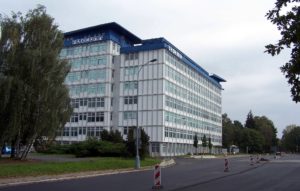Will Foxconn investment pay off for the United States?
December 5, 2017

Foxconn, the world’s largest electronics contract manufacturer (ECM) and the largest private employer in China, is building a manufacturing facility in America’s heartland.
If you have never heard of them, chances are you’ve seen their work: The company has built many of the electronics in your home or office. Their clients include Apple, Amazon, Dell, and Google.
Background
In 1974, Terry Gou borrowed less than $10,000 from his mother to start Hon Hai Precision Industry, Foxconn’s parent company. They started by building plastic knobs for black-and-white televisions in the 1970s.
A decade later they were making electrical connectors for Atari and IBM. The Atari contract gave Gou the leverage and ambition to tackle the United States, and he started cold-calling businesses in need of electronics contract manufacturing.
The company is now worth well over $100 billion, has 12 factories throughout the world, 12 subsidiaries, and manufactures some of the world’s most sought-after consumer electronics such as Xbox, PlayStation, iPad, Blackberry, and the iPhone.
Will history repeat itself?
Throughout the years, Foxconn has been embroiled in a number of scandals, revolving primarily around working conditions. Employee suicides were a huge issue, and caused Apple to step in and help Foxconn by investing to improve working conditions. In an effort to rejuvenate manufacturing in the United States, Foxconn says it will make a foreign direct investment of $10 billion over four years to build a 20-million-square-foot building in the state of Wisconsin. The manufacturing plant plans to produce 8K LCD systems, which it says will create 13,000 jobs. The announcement is similar to one made in 2013 about a potential plant in our home state of Pennsylvania — a plant that never came to fruition.
Where will it source staff?
If Foxconn moves forward with its plan, how will it staff the plant? The manufacturing employee pipeline is basically dry. Students have been steered away from trade schools in favor of four-year colleges and STE[A]M-focused (science, technology, engineering, arts, math) careers.
Manufacturing industry partnerships have recently banded together to give manufacturing a makeover of sorts. By highlighting different areas within the sector and the fact that the average salary (over $40k) is more than what many post-baccalaureate graduates make, people are slowly changing their minds about the trade.
But can this effort shift enough people to fill the void? If small manufacturers such as Electro Soft have a difficult time finding workers in a suburb of the fifth-largest city in the U.S., how will Foxconn source over 10,000 in Wisconsin?
Is Foxconn investment wise?
Foxconn is also known for difficult working conditions and low wages. Will it have the ability to attract and maintain the talent necessary to meet production demands?
And finally, there are questions about whether the Foxconn deal is a wise investment of taxpayer money: According to a story in the Los Angeles Times, the deal will make Foxconn the “biggest foreign recipient of state subsidies” in history. “The state’s nonpartisan Legislative Fiscal Bureau projected that 25 years would pass before taxpayers saw a return on the investment. It would take longer, the agency found, if workers from neighboring Illinois commuted into the state to take the Foxconn jobs,” the story states.
Will the Foxconn deal be good for Wisconsin’s economy? Will it be a good move for the United States?
Only time will tell.
